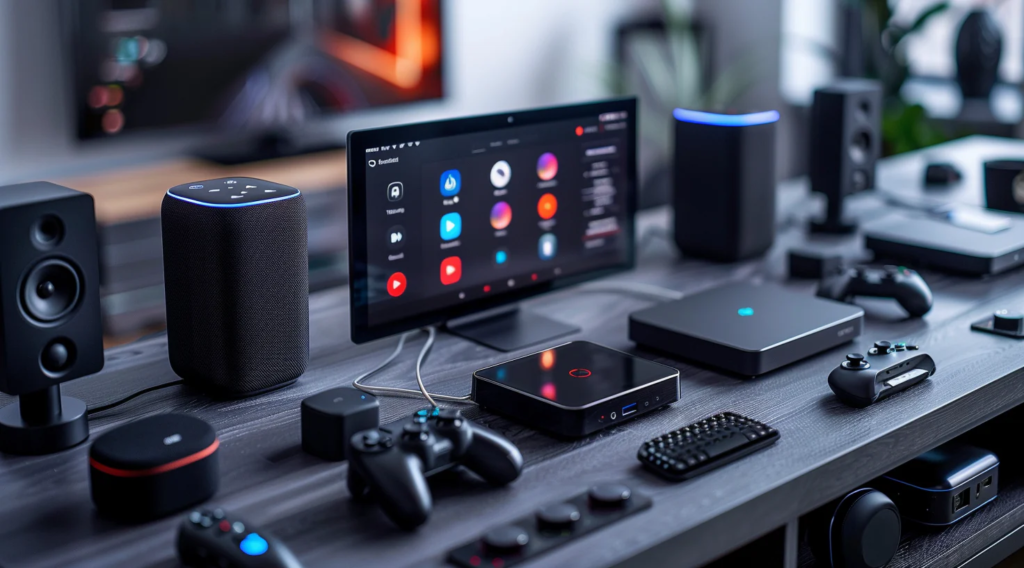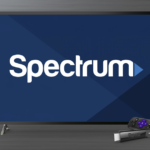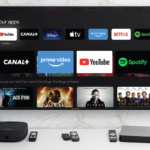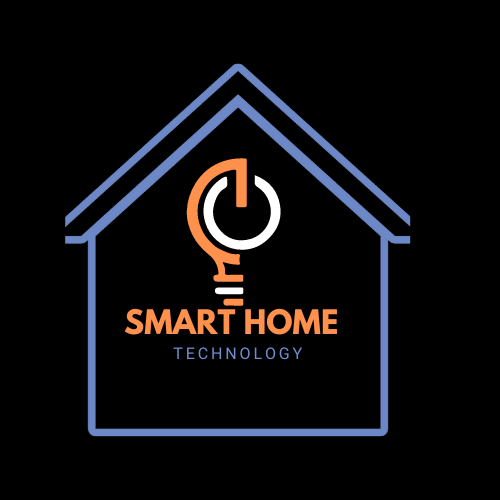A streaming device allows you to access online content, such as movies, TV shows, and music, from platforms like Netflix, Hulu, Disney+, and YouTube. It connects to your TV and the internet, turning a standard television into a hub for digital content.

Photo credit: Toms guide
Table of Contents
Introduction
When I first unboxed a new smart TV, the built-in streaming apps seemed like all I needed. Over time, however, their limitations became apparent—clunky interfaces, unreliable search functions, and restricted content libraries.
That was when I stumbled upon the technology of streaming devices. I was then introduced to a system of dedicated streaming options with the ultimate solution to enhance my entertainment experience. Follow me through this article as I answer with evidence the question, “Are streaming devices worth it?”
Streaming devices are not just an accessory but an essential upgrade for anyone serious about entertainment. By bridging the gaps in smart TV technology, they provide a comprehensive, future-ready solution for all your streaming needs.
You can also benefit from advanced search capabilities, voice control, and seamless integration across multiple streaming platforms. Unlike smart TVs, which often come with a limited set of apps and clunky interfaces, streaming devices are designed to prioritize user convenience.
They provide direct access to your favorite shows, movies, and channels without the hassle of navigating outdated or slow software. Read more on why you need a streaming device.
Benefits of Streaming Devices
Unparalleled User Experience
Streaming devices like Roku TV, Fire TV, and Apple TV are designed for seamless navigation. Their intuitive home screens, responsive interfaces, and advanced features like voice control create a user-friendly experience unmatched by most smart TVs. Once frustrating tasks—like searching for a specific show—become effortlessly easy, like searching for your photo in a school album; you know what to do.
Key Features of Streaming Devices:
- Simple, clutter-free home screens.
- Advanced voice control for hands-free operation.
- Faster responsiveness compared to most smart TV software.
Expansive Content Options
One of the most compelling reasons to invest in a streaming device is the access to a nearly unlimited library of live and recorded content. Unlike smart TVs, which often limit you to pre-installed or restricted apps, streaming devices offer:
- All primary services, such as Netflix, Hulu, Disney+, and HBO Max, are available.
- Thousands of free channels, movies, and shows.
- Live TV options enable you to cut the cord without losing access to traditional regional programming.
It doesn’t matter what you’re looking for; streaming devices ensure it’s just a few clicks away with their vast content.
Frequent Software Updates
Smart TV hardware cannot be upgraded on the device—oh yes, it can’t—so it may require replacement sooner than its counterpart. As audio and video codecs become more advanced and apps and UIs are updated, more processing power is needed to meet the demand. Eventually, loading times will become notably slower, and navigation between shows will become increasingly sluggish until the lag is too much.
Unlike smart TVs, streaming devices like Roku and Fire TV regularly release updates of their service. These updates:
- Enhance performance and fix bugs.
- Introduce new features and services.
- Keep your device compatible with emerging apps and technologies.
This is to ensure that your streaming experience keeps evolving with the current trend in experience long after your initial purchase of this device.
Private Listening and Accessibility
For those like myself who value discretion or personalized viewing, streaming devices excel with features like:
- Private listening modes: Pair wireless headphones or a remote with a headphone jack for uninterrupted, private audio, which is excellent, especially with fabulous wireless headphones.
Portability and Versatility
One of the underrated advantages of streaming devices is their portability. Compact and easy to set up, they can travel wherever you go. Whether staying at a hotel, visiting family or going on vacation, you can plug your streaming device into any compatible TV and instantly access your personalized content library. This makes it an excellent companion for frequent travelers or those who prefer continuity in their viewing experience.
- Portable convenience: Devices like Amazon Fire TV Stick are compact and travel-friendly. They let you stream your content with hotel TVs or during vacations anywhere with internet access.
Enhanced Audio and Visual Quality
Streaming devices also support cutting-edge audio and visual standards, including 4K Ultra HD, HDR10, and Dolby Atmos. This ensures you’re getting the highest possible quality for your entertainment.
While many smart TVs support these technologies, the software and hardware limitations often mean subpar performance. A streaming device can bridge that gap, ensuring smoother playback, better sound synchronization, and richer picture quality.
Elevated Viewing Experience
Smart TVs often feel sluggish compared to the flashlike performance of dedicated devices. Streaming devices feature faster interfaces, better search algorithms, and more reliable local and foreign content streaming.
Immersive Audio and Video
For cinephiles and audiophiles, streaming devices offer enhanced audio-visual experiences, including:
- Dolby Atmos and DTS:X support for rich surround sound.
- 4K and HDR capabilities for vibrant picture quality.
Seamless Integration
Many streaming devices are now designed to work with existing smart home setups, allowing you to control lights, thermostats, and more from your streaming device. Isn’t that great?
Cost-Effectiveness
Considering the affordability of present-day streaming devices, which offer significant value for a small investment, you can transform your TV into a fully optimized entertainment hub for as little as $30 to $100.
Combine this with the cost savings of cutting traditional cable subscriptions, and the long-term financial benefits become apparent. Additionally, many free and low-cost apps on these devices make them even more attractive for budget-conscious users like me.
Smart TV Apps vs. Streaming Devices: What’s the Difference?

Photo credit:Meecool
Smart TVs are audiovisual computers with built-in streaming capabilities. You can download streaming services like Netflix and Hulu to your television and play using the TV’s operating system as an all-in-one streaming solution that works seamlessly straight out of the box.
Alternatively, you can opt for a separate streaming device, like Amazon’s Fire TV Stick, Google’s Chromecast, or Apple’s Apple TV. Streaming devices turn a regular television into a smart TV by acting as a receiver for streamed content, connecting via a standard HDMI port.
They typically come with a handset or are controlled via a mobile device and, in some instances, offer extra benefits like download storage, high-resolution video, and immersive audio.
A streaming device provides a plug-and-play solution to smart TV obsolescence. It can be regularly switched to the latest version with updated, faster chips, optimized software, and a native UI. Wireless technology is the beating heart of your smart TV, so it makes sense to consider an external device for streaming, bypassing your built-in smart TV apps altogether.
When shopping for a new television, an external streaming device lets you prioritize audiovisual features and connectivity without worrying about its processing power and UI.
Wide Range of Options
Plenty of options are available for streaming devices. If you are shopping for a streaming device, you are spoiled for choice. I had quite a hassle picking out my first one. There is a solution to suit almost every requirement and budget, each with its features and benefits, although they all perform the same fundamental task.
Some streaming service providers, including Apple, Amazon, and Roku, have native devices, but these still work flawlessly with other providers’ apps. You do not have to compromise viewing quality when connected to high-spec TVs, as even some affordable streaming devices provide 4K high-definition video. Read more on how to select which streaming device is best for you.
Here’s a comparison between a Smart TV and a Streaming Device in table form:
| Feature | Smart TV | Streaming Device |
| User Interface | Built-in OS (e.g., WebOS, Tizen) can be slow or clunky as hardware ages. | Optimized OS (e.g., Roku OS, Fire OS); smooth and regularly updated for a better experience. |
| Content Access | Limited by the TV’s ecosystem, some apps may become unavailable as the TV ages. | A broad range of apps and frequent updates ensure compatibility with new platforms. |
| Performance | Tied to the TV’s built-in hardware, often slows down over time. | Dedicated streaming hardware offers faster performance and efficiency. |
| Upgradability | Limited; replacing the TV may be necessary to regain lost features or performance. | Easily upgradable; simply replace the device when outdated. |
| Picture and Audio Quality | Dependent on TV hardware; supports 4K, HDR, Dolby Vision, but may be limited by software. | Supports advanced standards like 4K HDR and Dolby Atmos, optimized for smooth playback. |
| Portability | Not portable due to its size. | Compact and lightweight; easily transported for use in different locations. |
| Cost | Higher upfront cost; replacing an outdated TV can be expensive. | More affordable; replacing or upgrading the device is cost-effective. |
| Connectivity | Built-in Wi-Fi and Ethernet; screen mirroring and limited smart home integration. | Wi-Fi and Ethernet support; excellent compatibility with smart home devices and voice assistants. |
| Voice Assistants | This may include limited support for Alexa, Google Assistant, etc. | Fully integrates with Alexa, Google Assistant, or Siri, offering advanced functionality. |
| Lifespan and Updates | Limited software updates; the entire TV may need replacing when outdated. | Frequent software updates, longer usability, and more sustainability. |
Recommendation
- Choose a Smart TV if you want an all-in-one solution primarily for watching TV and don’t mind slower updates.
- Choose a Streaming Device if you value performance, affordability, portability, and access to a broader range of apps.
FAQ’s
What is the point of a streaming device?
A streaming device allows you to access online content, such as movies, TV shows, and music, from platforms like Netflix, Hulu, Disney+, and YouTube. It connects to your TV and the internet, turning a standard television into a hub for digital content. It provides an affordable and easy way to access a wide variety of entertainment without relying on traditional cable or satellite services.
What system is best for streaming?
The best system depends on your needs and ecosystem preferences:
- Roku: Known for its user-friendly interface and broad platform support.
- Amazon Fire TV: Great for Alexa users and Amazon Prime subscribers.
- Apple TV: Ideal for Apple ecosystem users.
- Google Chromecast with Google TV: Perfect for Android and Google ecosystem users.
- NVIDIA Shield TV: Best for gamers and advanced users, offering 4K streaming and GeForce NOW gaming.
How do I know if I need a streaming device?
You may need a streaming device if:
- Your TV doesn’t have innovative features or an intuitive interface.
- Your smart TV lacks access to the apps or platforms you want.
- You prefer a faster, more responsive system.
- You’re looking for a portable option for streaming on multiple TVs.
- You want advanced features like 4K HDR, Dolby Atmos, or screen mirroring.
Do I need a streaming device if I have a Smart TV?
Not necessarily. However, you might consider one if:
- Your Smart TV’s interface is slow or outdated.
- It doesn’t support the streaming platforms or apps you want.
- You want a more consistent and customizable user experience.
- You’re looking for additional features your Smart TV doesn’t offer, such as enhanced voice controls or gaming capabilities.
What is the fastest streaming device?
Some of the fastest streaming devices include:
- NVIDIA Shield TV Pro: High performance with a powerful processor.
- Apple TV 4K (2nd or 3rd Gen): Optimized for speed and quality.
- Amazon Fire TV Cube: Features a Hexa-core processor for fast performance.
- Roku Ultra: Known for fast app launches and smooth streaming.
Can I stream TV without a Smart TV?
Yes, you can stream TV without a Smart TV using:
- A streaming device (e.g., Roku, Fire Stick, Chromecast).
- A gaming console like PlayStation or Xbox.
- Connecting a laptop or smartphone to the TV via HDMI.
- Blu-ray players with streaming capabilities.
How does streaming work?
Streaming delivers digital content (audio or video) over the internet in real time. Instead of downloading the file, it plays directly on your device, as data is sent in small chunks. A stable internet connection ensures smooth playback without interruptions.
Can we run a Smart TV without the internet?
Yes, but its functionality will be limited. You can:
- Watch cable or satellite TV.
- Use a DVD or Blu-ray player.
- Play media files from USB or external drives.
However, you won’t be able to access online streaming apps or features like updates and voice assistants.
How do you convert a standard LED TV to a Smart TV?
You can convert a standard LED TV to a Smart TV using:
- Streaming Devices: Plug in a Roku, Fire Stick, Chromecast, or Apple TV via HDMI.
- Smart Blu-ray Player: Offers built-in apps and streaming.
- Android TV Box: Provides a complete Smart TV experience.
- Gaming Console: Many consoles support streaming apps.
- Screen Mirroring Device: Cast content from your smartphone or laptop to the TV.
You only need an HDMI port and an internet connection on the TV.
Conclusion
A streaming device is a worthwhile investment for any cord-cutter or smart TV owner. They offer simple ways to access all your favorite streaming services in one device, with an intuitive interface that’s easy to navigate. Not to mention, its frequent software and security updates give you the latest features and upgrades, which keeps your information safe and keeps you entertained
If you’re on a close budget, a streaming stick like the Roku Express or Fire TV Stick can serve you. If you want 4 K streaming or gaming, go for Roku Ultra, Fire TV Cube, or the new Chromecast with Google TV.
We Value Your Opinion!
Have you had experience with a Smart TV or a Streaming Device? Which do you prefer and why? Share your thoughts, questions, or recommendations in the comments or feedback below!




